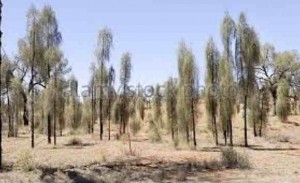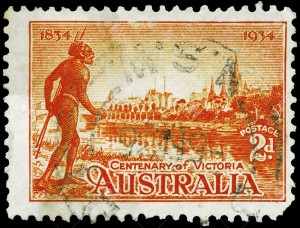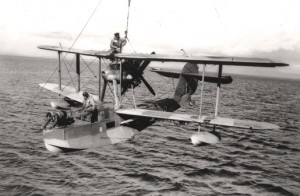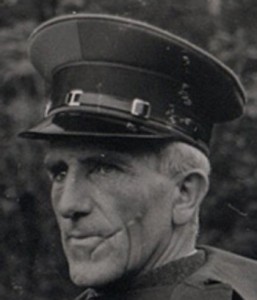Today’s dispatch is Lies, Damn Lies and Statistics. Originally dispatched on 14 December 2015. The editors will republish this dispatch until you have read it in full!
Hiya Folks, Namaskarum,
So the 2015 Parliamentary closed with one of my favourite politicians in hot water. It couldn’t happen to a nicer fellow. Once again we that live at the Front of the multipronged ethnocentric assimilationist attack that Remote Aboriginal Australia continues to be subjected to, derive one of the few joys we get to enjoy… Schadenfreude.
https://www.youtube.com/watch?v=kbJcQYVtZMo …. Ode an die Freude…(the Flash Mob)
Back when Mal Brough was one of the main architects of the Northern Territory Emergency Response, he shamelessly lied through his teeth to justify the Howard Government’s last throw of the dice in an attempt to avoid electoral defeat. The collateral damage done to the social fabric of these unique remote communities was of no concern to those political opportunists nor to those that followed.
Yet now almost a decade later we suddenly hear in the Parliament that Mal Brough is being accused of telling porkies, and his new boss (need I remind you that ‘mal’ means bad in Latin?- apologies to all the good people called Mal) springs to his defence “these are only allegations”. C’mon Mal, why not call a spade a spade? He’s a fucking liar and always has been and always will be.
https://www.youtube.com/watch?v=1n03a7cLf0M (Lies- The Knickerbokkers)
Jack Waterford, the Editor-at-Large of The Canberra Times, is a journalist who in my humble opinion most persistently hits the nail on the head in relation to Indigenous Affairs in Australia.
The definition of ‘At Large’ in an on-line dictionary is “… especially of a criminal or dangerous animal) at liberty; escaped or not yet captured”. I for one hope they never capture him.
Jack’s latest contribution so encapsulates what I have tried to reveal in countless musical dispatches, that I’m offering it in its entirety as a Christmas Present.
Aborigines have again been caught out letting their comparative disadvantage increase, compared with non-Aboriginal Australians and concentration camp inmates at Manus Island. Scores of our best statisticians are now hard at work looking down the wrong wombat holes in search of an explanation.
How could this happen under our first prime minister for Indigenous affairs? Or indeed, under the maternalistic reign of Jenny Kabbarli Macklin, the wise and all-knowing oracle able to reinterpret any evidence that did not suit her preconceptions? How could 10 years of photo opportunities of miscellaneous ministers, policemen and army generals (the latter supplied with their public relations officers) walking with Aboriginal children towards remote area primary schools actually produce worse educational outcomes, whether in school attendance rates, or in reading, writing and arithmetic?
How could it be that after so many expensive prime ministerial weeks in Aboriginal communities, showing Aborigines, in front of thousands of specially imported white public servants, how to hammer in nails, that we now know most of the objectives of the “closing the gap” will not be achieved, and that in many cases, the gap of Aboriginal disadvantage, compared with other Australians has widened?
Would it have been worse without such stunts? Or without the hand-chosen advice from hand-chosen Aboriginal leaders without constituencies but ample access to the media? Or the efforts of professional bureaucrats inside the single most important department of state, under the guidance of the leader of the public service?
Or is it, as usual, the blackfellas’ fault again. These dreadful people who rebuff all efforts to help them. Are these surly ingrates about to squander the opportunities to be provided by our determination to “give” them a constitutional affirmation of their existence, whether they want it or not?
Those who suspect the latter might note that, so cunning have been these recalcitrant folk, that even when, or if, their health, educational, economic or mortality statistics improved (compared with how they had been some years before) they did not improve by as much as the equivalent improvement for the whole population. That is, they fell further backward even when going forward. (Just like, except worse, than most of the bottom half of the population under the last 20 economic boom years.)
One of the latest encyclicals describing, if not doing anything very much to change the situation is a report by the Productivity Commission, filling in for the now-abolished COAG Reform Council in preparing the necessary annual report on COAG’s work, under the National Indigenous Reform Agreement, on progress in meeting COAG’s Close the Gap targets.
This report points out that there is now a massive whitefella industry in preparing annual national reports describing, in entirely impersonal but voluminous detail, on Indigenous outcomes and disadvantage. Most of those involved in this industry, some at $400,000-plus a year, have their salaries paid from money described as going to Aboriginal affairs, but can manage for years without actually having to encounter a disadvantaged Aborigine.That’s in line with the fact that only about one dollar in every 10 notionally being spent on Aboriginal Australians is ever touched by an Aboriginal hand.
The authors of this (200-page plus umpteen-page set of statistical addenda) report note:
“The commission estimates that the total page count for the other national reports is close to 2000 pages, with the equivalent of almost 7000 pages of data available as electronic attachments.
“There is considerable overlap and duplication across the various reports. And some of the data used for the assessments are not updated each year, which means for annual Closing the Gap reports there is little option between data updates than to reiterate past findings.”
This is most unmannerly on the part of the Productivity Commission. The normal practice is to deplore waste and duplication among programs benefiting Aborigines, rather than the Aboriginal industry, on which the national prosperity may rely, particularly if Malcolm Turnbull’s innovation thing takes off. Indeed the usual practice is to call for more reports, better statistics, more conferences and working parties, even if they are to be focused on ways of cutting the overlap.
To be fair on the PC, however, it gives the statistics a pretty good look-over and comes up with some cogent criticisms of them, which might, with the right bureaucratic opportunism, require a good deal of further joint study, preferably away from the office. Perhaps, in the circumstances at Yulara, if at a cooler time of year.
The other reports to which the PC refers are never, of course, issued simultaneously. That has the effect, inter alia that one can choose any one of them to prove almost anything, other than that life for Aborigines is improving, or improving much. There’s the Overcoming Indigenous Disadvantage report; the Report on Government Services: Indigenous Compendium; the Prime Minister’s own Closing the Gap report; and the Institute of Health and Welfare report on the Health and Welfare of Australia’s Aboriginal and Torres Strait Islander People’s Overview. And there’s the ATSI Health Performance Framework Report produced by the Health Minister’s Advisory Council; and, of course the Indigenous Expenditure report.
This booming industry has, alas recently had a few economic setbacks, at least for those given to weighing, counting, parsing, measuring and calculating Aborigines, if not, necessarily, for the benighted subjects of all of these attentions.
We are, for example, now deprived of regular very glossy reports from a Commonwealth coordinator-general for remote Indigenous services, who was, by the end of a generally unlamented reign under the last government, given partly to co-ordinating the work of other coordinators-general as well as making up his own not particularly reliable statistics of whatever took his fancy. It is not clear that anything much, other than empires, collapsed after the function was dispensed with.
Then there was another body – almost the only actually useful one, as far as Aboriginal communities were concerned – called the Closing the Gap Clearing House. It gathered information on what programs actually seemed to work, and what did not. It also collected program evaluations, as well as material reviewing (as opposed to auditing) the efficacy of particular policies and programs. This had the clearly undesirable effect of allowing good and bad experiences in one region to inform decisions in other regions. This is a function best carried out by ministers, from their own deep reservoirs of experience and ideology, and by those officials who have learnt that promotion depends on the paper flow with colleagues, not achievement in different communities.
Naturally, the clearing house was the first to go, as an efficiency, even as efforts were redoubled to increase the complicatedness, uselessness and detachment of any number of other activities designed to get better transparency, accountability and, no doubt these days, agility and innovation in Aboriginal affairs.
It should not be assumed that I have even begun to describe the limits of such enterprise in closing the gap on Aboriginal disadvantage. The surprising thing is that the statistical reports are concerned with matters such as bums on seats in preschools rather than spreadsheets in Canberra.
Or in each of the other capitals, including on City Hill, which itself has no triumph of which to speak. Virtually every single one of the states and territories has a bureaucratic operation duplicating each and everything that the Commonwealth and COAG does in trying to close the gap, if only to feed in doubtful statistics, or political marketing advice, to the powers that be within their domains.
And these are but mere government bodies, staffed by officials. There is now an additional group of academic and non-government agencies, and lobbies in the health, education and welfare industry, churning out data, or copying selected pieces of other people’s data, all for the higher and greater good of Aborigines, whether they want it or not. Not much of it is greatly informed by any effort to get an Aboriginal viewpoint on the results of these labours, other than with the facilitation of a further industry of urgers and observers ready to say, for a price, that the victims have been told and seem to understand what has been decided for them.
Of course the Closing the Gap industry is itself but the mere tip of an iceberg of investigation, reports, inquiries, tests, tracts, commissions and consultations generated among whitefellas in Aboriginal affairs, and used to decide what’s best .
More than 40 years ago, writing about Aboriginal ill health in a book, I commented that the academic medical literature already contained at least one paper describing it for every Indigenous family, and predicted that a day would come soon when there was at least one for every Indigenous individual. I expect that this time has arrived. Not much of this scholarship did much to improve health.
Aboriginal ill health is but a subset of an academic and official literature pontificating on Aboriginal disadvantage in education, in incarceration, in social and economic status, and morale. Most is very sympathetic to the problem, whatever it is. Some have been quite angry and strident about the persistence of disadvantage, or the failure of everyone to fix it.
No national shame, here or elsewhere has been better documented, recorded, discussed or made the subject of so many conferences, inquiries and consideration. One can wake, like Rip Van Winkle, from a sleep of decades and take up a conversation on appropriate policy as if nothing had changed. Other than that a few more generations have been stolen and a few more tens of billions spent .
No problem has seemed so intractable, in spite of sincere, earnest and well-funded efforts to do something about it. Scores of politicians, from prime ministers down, have sworn they will personally make a difference. If there has been an inclination to scoff, there has been some acknowledgment that it has been said before, but that this time he, or she, means business.
I have known and observed every single minister for Indigenous affairs, however described , since the function acquired ministerial status in 1968. Yet I cannot think of a single one since, perhaps, Peter Baume in 1980, whose contribution made a positive difference to outcomes in Aboriginal affairs. And I wouldn’t really write home about Baume.
Even when the bad decisions or well-meaning but stupid interventions of hopeless ministers had negative outcomes, the ministers had a good less long-term impact than one might imagine. No one expected much better, and their appropriate fate is, simply to be forgotten. Can anyone, for example, remember anything, good or bad, that Amanda Vanstone or Phillip Ruddock did in Indigenous affairs? Yet Vanstone apparently has expertise to offer the constitutional recognition argument, and is, accordingly, back on the public payroll .
One could write a history of Aboriginal communities, families or individuals without thinking of a single thing that any federal minister (or prime minister) did or said that made much of a difference to their lives, or which even had much long-term impact on policy and practice, or social or economic outcomes.
That is not very remarkable. Aborigines may attract bureaucrats, academic and politics like dogs attract fleas. As is often noticed and deplored, some get into all sorts of unhealthy interdependence relationships, sometimes extending over generations, trapping people in long, and often highly dysfunctional cycles of helplessness, hopelessness and depression.
Such people – the givers as much as the takers, the people making lives and careers from it as much as people from whose misery they profit – need help, not least in weaning and being weaned .
For all that, only Aboriginal people can liberate themselves from their conditions. The most that their friends, people who think they are their friends, and people who think they know best for the objects of their pity, can do is to help create the environment in which that liberation can occur. More reports, more studies, more seminars, and more bureaucrats are unlikely to help much. They are, in fact, the biggest problem.
I say amen to all that, but Jack “ only Aboriginal people can liberate themselves from their conditions” is much much easier said than done. “The environment in which that liberation can occur” is all but non-existent. But, never let that flickering little flame of hope be extinguished.
…Deep in my heart, I know that I do believe..
https://www.youtube.com/watch?v=RkNsEH1GD7Q (We shall overcome- Joan Baez)
…. A change is gonna come, and there is Beauty in the World… Not least in these remote Aboriginal communities.
https://www.youtube.com/watch?v=0qX7ZsxD3Ik (Macy Gray – Beauty In The World)
Have a Happy Christmas,
Pinne Kanam.
Frank











